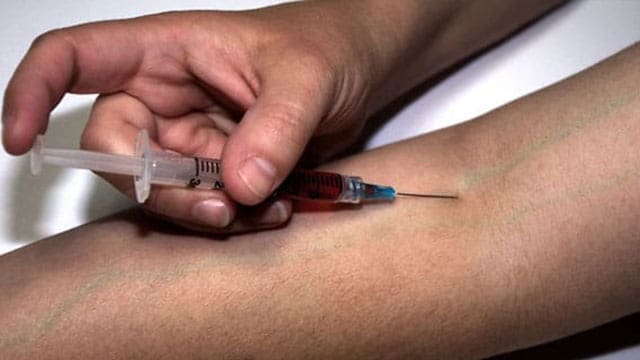 Almost everyone has a friend or family member who claims to faint whenever they need to get a vaccination or to have a blood sample taken.
Almost everyone has a friend or family member who claims to faint whenever they need to get a vaccination or to have a blood sample taken.
Sometimes these individuals are seen as overly squeamish about something that really isn’t very serious. In reality, a lot of people suffer from a phobia of blood, injections and injury. Rather than simply wanting attention, these people have serious, persistent fear and really do faint when exposed to situations where blood, injections or injury are present.
A phobia is defined as an excessive, persistent fear of a situation or object. They are quite common and affect approximately one in 10 Canadians. Usually, the fear is surrounding the anticipated danger or harm that can be caused by the situation or object. This fear is labeled excessive because it is out of proportion to the actual level of danger associated with that situation.
In the case of blood, injection and injury phobias, individuals experience an immediate anxiety response when exposed to even the sight of one of these things on television.
As a result, many people with this phobia avoid all violent or medical-related television shows and movies and often avoid medical treatment as well. This avoidance can be dangerous as individuals with the phobia may put their health at risk by skipping necessary treatments or routine blood tests.
Blood, injection and injury phobias typically begin in early childhood and approximately 75 per cent of people who experience this phobia report a history of fainting in response to the feared situations.
Fainting is a symptom that is uncommon for most phobias so its presence in the case of blood, injection and injury phobias is interesting. It is known as ‘emotional fainting’ and occurs almost as a reflex in the parasympathetic nervous system. In response to the sight of blood or a needle, the heart rate and blood pressure decrease and less blood and oxygen are sent to the brain. Together, these cause a brief loss of consciousness.
All of these symptoms are the opposite of what most phobias induce. Usually there is a heightened response including increased heart rate, higher blood pressure and other effects such as a surge of adrenaline.
It is unknown why the blood, injection and injury phobia spurs the fainting response.
Fortunately, as with all phobias, this one is relatively easy to treat effectively with no medication needed.
Cognitive behaviour therapy (CBT) is used to treat all phobias. The therapy focuses on slowly and safely exposing the individual to the feared situation or object. This exposure based treatment continues and increases until the feared situation no longer provokes feelings of anxiety.
Patients trying to get over their phobia of blood, injections or injury would likely start therapy by being exposed to photos of needles and blood and other feared situations. This indirect exposure would then progress to looking at actual needles and syringes etc.
Usually, to avoid fainting, individuals receiving this therapy will begin exposure while they are lying down. Eventually, exposure will increase to more realistic situations including watching blood being taken until finally the patient has his or her own blood taken.
Along with the guided therapy, patients are encouraged to increase exposure in everyday life. For example, people who avoid any television shows or movies with blood or injury might begin to allow themselves to see these things.
Finally, patients with blood, injection and injury phobias are taught ways to avoid fainting. To do this, the individual is taught to tense the major muscle groups such as legs and abdomen in response to the first signs of fainting. By doing this, the patient minimizes the body’s response that leads to a drop in blood pressure.
As is the case with all phobias, it is important to face one’s fears in order to get over them.
If you or a loved one experiences a blood, injection and injury phobia that is causing disturbance in everyday living, speak with your doctor about getting treatment.
Dr. Latimer is president of Okanagan Clinical Trials and a Kelowna psychiatrist.
The views, opinions and positions expressed by columnists and contributors are the author’s alone. They do not inherently or expressly reflect the views, opinions and/or positions of our publication.

